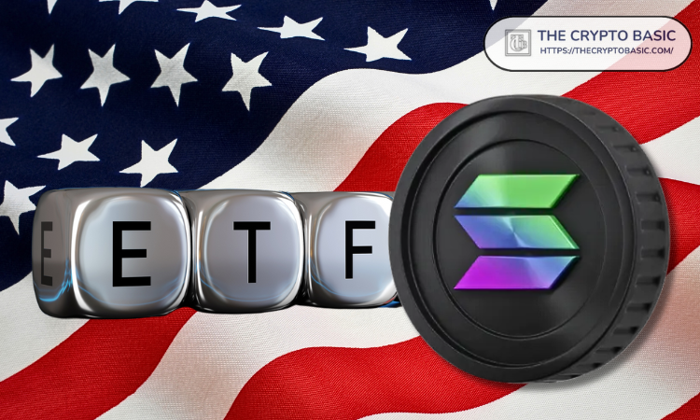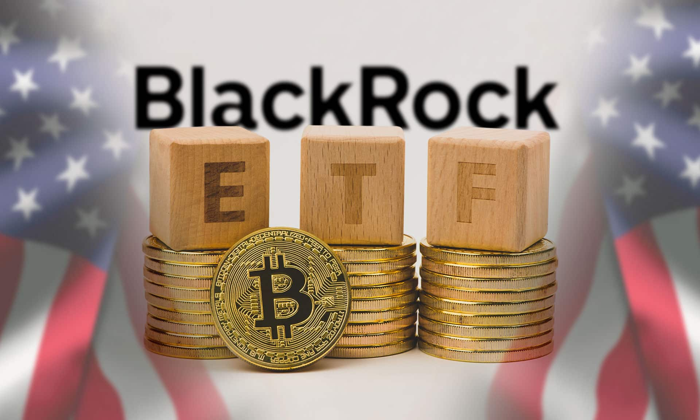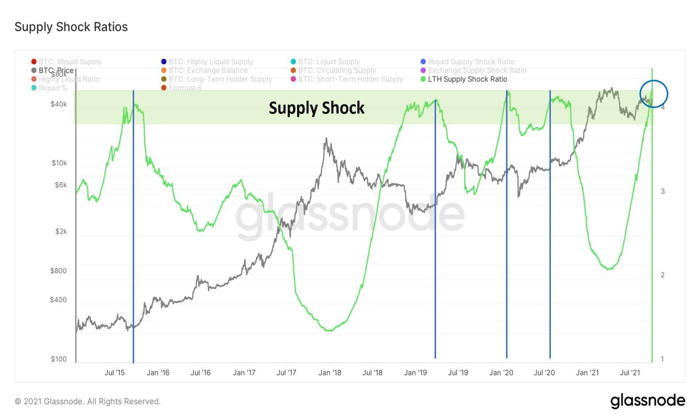Ethereum price strength has become a pivotal focus among investors as the network demonstrates resilience in the face of market volatility. Despite an inability to consistently breach the $2,700 mark since mid-May, Ethereum’s fundamentals have shown promising signs, with both ETH network activity and layer-2 transactions on the rise. Additionally, Ethereum futures markets are outperforming expectations, providing a solid foundation for investor confidence and potential gains. As the cryptocurrency market grapples with macroeconomic headwinds, Ethereum’s total value locked (TVL) growth reinforces its dominance and attractiveness to asset holders. This potent combination of factors underscores Ethereum’s significant position within the cryptocurrency landscape, paving the way for future price movements.
The strength of the Ethereum ecosystem is increasingly evident as it navigates the complexities of the current cryptocurrency environment. Various indicators, such as enhanced network performance and robust futures markets, highlight the resilience of Ether amidst recent selling pressure in the altcoin sector. While ETH may struggle to overcome resistance levels, the uptick in layer-2 transactions and substantial TVL growth signals a vibrant future for this leading blockchain. Investors are now looking to these elements as key determinants in Ethereum’s market trajectory, particularly in how they influence overall confidence within the digital asset space. As Ethereum continues to expand its influence, understanding these dynamics becomes crucial for making informed investment decisions.
Ethereum Price Strength in Relation to Market Dynamics
Ethereum’s price strength, currently holding firm at $2,524, has shown notable resilience against a backdrop of broader market volatility. Despite challenges in the cryptocurrency market, where Bitcoin and altcoins face sell-offs, ETH has managed to maintain the lion’s share of its weekly gains. This strength can be attributed to several factors, including the robust performance of Ethereum futures. With these derivatives growing more robust, traders seem to be betting on Ethereum’s uptrend, contributing to its price support even as macroeconomic uncertainties loom.
Moreover, Ethereum’s performance stands out when compared to the overall cryptocurrency market capitalization. Over the past 30 days, Ether has outperformed the market by approximately 17%, reinforcing its position as a leading player in the blockchain ecosystem. This price resilience reflects increasing confidence among investors, particularly in light of Ethereum’s unique network activity and application growth, which are pivotal in driving future appreciation.
The Impact of Ethereum Network Activity on Price
Ethereum network activity has seen a significant uptick, particularly in the growth of layer-2 transactions. This escalation indicates a deeper ecosystem expansion, where user engagement and application development are driving more activities on the blockchain. Layer-2 solutions, which enhance transaction speeds and reduce fees, have empowered Ethereum to handle more transactions than its base layer, showcasing the network’s ability to scale effectively. As a result, these developments are not only boosting overall network activity but are also beneficial to ETH’s price stability.
In light of these advancements, the growth in Ethereum’s total value locked (TVL)—currently at $122 billion with a strong 54.2% market dominance—further cements its status in the DeFi landscape. Compared to other blockchain ecosystems, Ethereum’s layer-2 transactions are also garnering increasing contributions to its TVL, which diminishes the competitive pressure from rivals like Solana and BNB Chain. This creates a compelling environment for ETH holders, as the increased network activity tends to support a more favorable price outlook for Ether.
Analyzing Ethereum Futures and Market Sentiment
The ETH futures market plays a crucial role in shaping investor sentiment and expectations about Ethereum’s future price movements. Despite the recent drop in Ether’s price, which saw a 9% decrease between May 29 and 30, the annualized premium in ETH futures remains near 6%. This premium is indicative of market confidence, suggesting that traders are still optimistic about Ethereum’s recovery in the face of recent volatility. In neutral markets, such premiums are typical, as they reflect the risk associated with leveraged positions.
Furthermore, the significant liquidation of $159 million in bullish leveraged positions during the price drop implies that while some speculative investors faced challenges, the broader market sentiment toward ETH remains relatively stable. This resilience is bolstered by Ethereum’s fundamentals and the increasing utilization of its layer-2 scaling solutions, which present a strong case for sustained price growth amid fluctuating market conditions. Traders monitoring future ETH futures data will likely observe how these dynamics evolve alongside overall market trends.
The Growth of Layer-2 Transactions in Ethereum’s Ecosystem
Layer-2 transactions are proving to be a game-changer in Ethereum’s ecosystem, significantly enhancing its scalability and transaction capacity. The latest statistics reveal that the layer-2 network is processing over 15 times more transactions than Ethereum’s base layer, a factor that not only optimizes user experience but also drives broader adoption. As congestion and high fees become less of a barrier, users are increasingly migrating to these solutions, further entrenching Ethereum’s position in the DeFi and broader blockchain landscapes.
This extreme growth in layer-2 ecosystems contributes to Ethereum’s overall market strength and vitality. It helps maintain investor interest and participation, as seen in the $169 million fees generated by the top DApps on Ethereum. This momentum is pivotal for ETH’s price recovery efforts, especially as Ethereum strives to regain its previous highs. The advantage of employing layer-2 solutions could ultimately solidify Ether’s long-term viability and attractiveness in the dynamic cryptocurrency market.
Ethereum’s Total Value Locked (TVL): A Key Indicator
The total value locked (TVL) in Ethereum remains a critical metric for assessing its market position and health. Currently, Ethereum commands a significant 54.2% share of the total TVL across the blockchain landscape, illustrating its dominance in the decentralized finance (DeFi) sector. Despite a 43% reduction from its peak in December 2021, the resilience of Ethereum’s TVL amidst a broader bear market reflects sustained investor confidence and engagement with the platform.
As layer-2 solutions continue to flourish, Ethereum’s TVL may see further growth, especially as more projects migrate to its infrastructure due to its scalability and established user base. This highlights the importance of ongoing technological advancements and their impact on ecosystem attractiveness. A healthy TVL supports Ethereum’s liquidity and market strength, and coupled with rising layer-2 transactions, it bolsters the probability of price recovery, enhancing ETH’s prospects for investors.
Assessing Ethereum’s Competitive Advantages
Despite existing challenges, Ethereum continues to showcase competitive advantages that distinguish it from rival platforms. While some critics argue that Ethereum has not kept pace with emerging trends and offerings from competing networks like Solana, the depth and diversity of the Ethereum ecosystem—anchored by well-established DApps and innovations in layer-2 solutions—exhibit its inherent strengths. The ecosystem’s robust infrastructure is designed to support complex functionalities, providing an edge in attracting a variety of developers and projects.
Furthermore, Ethereum’s dominant market share in TVL and high transaction volumes underscore its appeal to developers and investors alike. This strong positioning ideally sets the stage for potential recovery, especially as Ethereum’s ecosystem continues evolving and adapting to the latest trends in blockchain technology. While the competitive landscape is constantly changing, Ethereum’s foundational strengths—coupled with its continued innovation—position it favorably for future growth in the cryptocurrency market.
Investor Sentiment and Macroeconomic Influences
Investor sentiment around Ethereum is consistently influenced by broader macroeconomic factors, including inflation rates, interest rates, and economic outlooks. As the global economy faces potential recessions and trade tensions, Ethereum’s performance may also endure fluctuations based on these external dynamics. Traders keenly monitor macro trends that can impact market sentiment, ultimately affecting ETH’s price stability and growth trajectory.
Moreover, Ethereum’s total value locked and active network usage can serve as stabilizing factors amidst market uncertainty. The increasing utilization of layer-2 solutions not only enhances scalability but also fosters user engagement, giving Ethereum a fundamental basis for resilience in challenging market conditions. Thus, while macro influences loom, Ethereum’s robust network activity and innovative advancements may provide a counterbalance to pressures from broader economic shifts.
DApps and Their Role in Ethereum’s Future
Decentralized applications (DApps) play a pivotal role in Ethereum’s overall ecosystem and future trajectory. While there has been concern over declining interest in DApps across various blockchains, Ethereum remains home to some of the most utilized applications in the space. As developers continue to innovate and create more efficient DApps, user engagement is expected to rise, thus impacting overall network activity positively. Ethereum’s well-established frameworks provide a conducive environment for DApp deployment, which strengthens its position in the market.
Moreover, the revenue generated from DApps on Ethereum significantly surpasses that of competitors, underscoring Ethereum’s effectiveness as a development platform. With the top four DApps generating $169 million in fees over the past month, it’s clear that Ethereum retains a robust ecosystem to propel growth. As these applications evolve and adapt to user needs, they will likely become crucial drivers for sustaining Ethereum’s price strength, ensuring its continual relevance in the rapidly changing cryptocurrency market.
The Future Outlook for Ethereum Amidst Industry Challenges
While Ethereum faces significant challenges in the ever-evolving blockchain landscape, its fundamental strengths provide a solid foundation for future growth. The clear advancements in network activity, such as the growing adoption of layer-2 solutions and the high total value locked, suggest a resilient infrastructure capable of withstanding external pressures. As Ethereum continues to attract developers and users, it solidifies its relevance in the cryptocurrency market, potentially paving the way for price recovery.
Optimistically, investor interest in Ethereum could rebound as the community adapts to changes in the macroeconomic environment. The ongoing commitment to innovation and scalability underscores Ethereum’s adaptability, which is crucial for future success. In the face of economic uncertainties and competitive dynamics, Ethereum’s ability to leverage its existing advantages while embracing new trends will determine its positioning over time, creating a path for potential upward price movements.
Frequently Asked Questions
What factors contribute to Ethereum price strength in the current market?
Ethereum price strength is primarily supported by improved network fundamentals, particularly the rise in Ethereum futures markets and increased activity in layer-2 transactions. These elements indicate a growing ecosystem that helps ETH maintain its value even amid broader cryptocurrency market fluctuations.
How does Ethereum network activity impact ETH price strength?
Ethereum network activity, including the growth of decentralized applications (DApps) and layer-2 transactions, significantly affects ETH price strength. Increased usage signals a robust ecosystem, helping to enhance investor confidence and contributing to ETH’s ability to outperform other cryptocurrencies.
What role do Ethereum futures play in assessing price strength?
Ethereum futures provide valuable insight into price strength as they reflect market sentiment. A steady ETH futures annualized premium suggests sustained bullish expectations, which reinforce the underlying strength of Ethereum’s price, even during market corrections.
Can Ethereum’s total value locked (TVL) influence its price strength?
Yes, Ethereum’s total value locked (TVL) is a critical metric for price strength. With a dominating market share, a high TVL reflects the network’s popularity and utility, which can positively impact ETH’s price stability and growth potential in the long run.
Are layer-2 transactions important for Ethereum’s price strength?
Layer-2 transactions are essential for enhancing Ethereum’s scalability and transaction throughput, directly influencing ETH price strength. As more transactions move to layer-2 solutions, the base layer becomes less congested, improving overall user experience and supporting ETH’s value.
How does the cryptocurrency market affect Ethereum’s price strength?
The broader cryptocurrency market significantly impacts Ethereum’s price strength. While ETH has shown resilience by outperforming the market in specific periods, macroeconomic conditions and shifts in investor sentiment across the market can influence ETH’s price movements and its comparative strength.
Why is investor sentiment regarding Ethereum’s competitive position important for price strength?
Investor sentiment regarding Ethereum’s competitive advantages plays a crucial role in price strength. Confidence in Ethereum’s unique offerings, such as its ecosystem and layer-2 solutions, can drive demand and sustain higher valuations, while skepticism may lead to price declines.
What are the potential risks to Ethereum price strength based on market dynamics?
Potential risks to Ethereum price strength include economic downturns that could drive ETH below critical support levels, such as $2,400. Additionally, declining interest in DApps and increased competition from rival networks may also present challenges to sustaining Ethereum’s price strength.
| Key Points | Details |
|---|---|
| Ethereum Price Action | ETH is currently priced at $2,524, with a 24-hour change of +4.19%. |
| Market Performance | Ethereum’s price has outperformed the broader crypto market by 17% in the past 30 days, despite facing challenges in breaking the $2,700 resistance since May. |
| Network Fundamentals | Improvement in network fundamentals and ETH futures market resilience support Ethereum’s price strength. |
| Layer-2 Transactions | Increase in layer-2 transactions demonstrating growth in the Ethereum ecosystem. |
| Total Value Locked (TVL) | Ethereum dominates with a 54.2% market share of the total $122 billion TVL across all blockchains. |
| Decentralized Applications (DApps) | Interest in DApps has declined, contributing to ETH’s current price being 48% below its all-time high. |
| Investor Sentiment | Investor feelings are tethered to macroeconomic trends, affecting the price resilience of Ethereum. |
| Futures Market Dynamics | Despite price drops, ETH futures indicate ongoing bullish sentiment with an annualized premium around 6%. |
Summary
The strength of Ethereum’s price is supported by a mix of solid network fundamentals and resilience in its futures markets. As ETH continues to navigate macroeconomic uncertainties, its growth potential remains robust, particularly through advancements in layer-2 solutions and significant dominance in total value locked (TVL). This positions Ethereum favorably in the cryptocurrency landscape, despite challenges such as declining DApp interest.
Ethereum price strength has become a prominent topic of discussion among cryptocurrency enthusiasts, particularly as the ETH network demonstrates significant resilience amid market fluctuations. Despite challenges in breaking beyond the $2,700 barrier since mid-May, Ethereum’s fundamentals continue to show improvement, largely due to the growth in ETH futures markets and escalating layer-2 transactions. This robust activity reflects an increasing interest in Ethereum’s ecosystem, leading to substantial gains that have allowed Ether to outperform much of the broader cryptocurrency market. With Ethereum’s Total Value Locked (TVL) maintaining a commanding share, the platform’s underlying strength may pave the way for sustained recovery. As investors closely analyze these dynamics, understanding Ethereum’s price trajectory remains critical in the context of its promising network activity and futures trading.
The strength of Ether’s price is increasingly attracting attention as market participants evaluate the factors influencing this key cryptocurrency. As Ethereum continues to dominate discussions in the blockchain space, its underlying network activity and expanding ecosystem are crucial to its market performance. Additionally, developments in Ethereum futures trading and the effects of layer-2 solutions highlight the dynamic landscape in which this digital asset operates. With Total Value Locked metrics reflecting healthy growth, Ethereum’s position relative to other cryptocurrencies underscores its potential resilience against ongoing market pressure. This comprehensive analysis of Ethereum’s economic landscape reveals that, despite macroeconomic uncertainties, the fundamentals supporting Ether are growing stronger.














